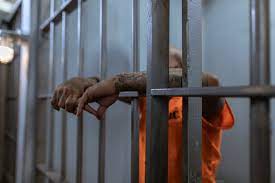An Examination of Minnesota’s Criminal Justice System and Efforts to Reform It

February 8, 2023
Minnesota’s criminal justice system is one that has undergone numerous reforms over the years in an effort to provide fairer and more effective justice for its citizens. Despite this, there remain areas of the system that have proven resistant to change, leading to continued calls for reform. This article will examine the current state of Minnesota’s criminal justice system and explore some of the most significant efforts to reform it.
The criminal justice system in Minnesota is divided into several distinct parts, including law enforcement, courts, and corrections. One of the key challenges in the system is ensuring that all parts work together effectively to provide fair and efficient justice. In recent years, there have been numerous efforts to reform the system, aimed at reducing the number of people incarcerated, reducing racial disparities in the criminal justice system, and improving public safety.
One of the most significant efforts to reform the criminal justice system in Minnesota has been aimed at reducing the number of people incarcerated in the state. In recent years, the number of people incarcerated in Minnesota has been rising, leading to concerns about the cost of incarceration and its impact on public safety. To address this issue, state lawmakers have implemented a number of reforms aimed at reducing the number of people incarcerated in Minnesota.
One of the most notable of these reforms was the passage of the “Justice Reinvestment Act” in 2014. This act aimed to reduce the number of people incarcerated in Minnesota by improving alternatives to incarceration, such as community-based supervision and treatment programs. The Justice Reinvestment Act has been successful in reducing the number of people incarcerated in the state, and has been credited with helping to reduce crime rates in the state.
Another important effort to reform the criminal justice system in Minnesota has been aimed at reducing racial disparities in the system. In recent years, studies have shown that racial disparities in the criminal justice system are a significant problem in Minnesota, with people of color being disproportionately incarcerated compared to white people. To address this issue, state lawmakers have implemented a number of reforms aimed at reducing racial disparities in the criminal justice system.
One of the most significant of these reforms has been the implementation of “Ban the Box” legislation, which prohibits employers from asking job applicants about their criminal history on initial job applications. This legislation is aimed at reducing barriers to employment for people with criminal records, and helping them to reintegrate into society after being incarcerated.
Another important effort to reform the criminal justice system in Minnesota has been aimed at improving public safety. In recent years, the state has implemented a number of reforms aimed at improving the effectiveness of the criminal justice system in protecting the public. One of the most notable of these reforms has been the implementation of “drug courts,” which provide treatment and support to individuals struggling with addiction and other drug-related problems.
Drug courts have been successful in reducing drug-related crime in Minnesota, and have been credited with helping to reduce the number of people incarcerated in the state. Additionally, drug courts have been shown to be more effective than traditional criminal justice approaches in addressing drug-related problems, and in improving public safety.
Despite these efforts to reform the criminal justice system in Minnesota, there remain areas of the system that have proven resistant to change. One of the most significant of these challenges is the continued use of cash bail, which often results in people being incarcerated simply because they cannot afford to pay their bail.
Another important challenge facing the criminal justice system in Minnesota is the lack of access to mental health and substance abuse treatment for people who are incarcerated. Despite efforts to address this issue, many people in the criminal justice system still do not receive the treatment they need to address their mental health and substance abuse problems.
In conclusion, the criminal justice system in Minnesota has undergone significant reforms in recent years, aimed at reducing the number of people incarcerated, reducing racial disparities, and improving public safety. However, there are still challenges that must be addressed, such as the use of cash bail and the lack of access to mental health and substance abuse treatment for people who are incarcerated.











